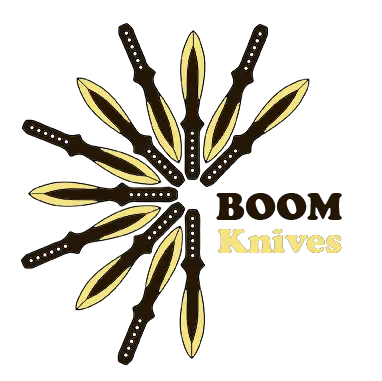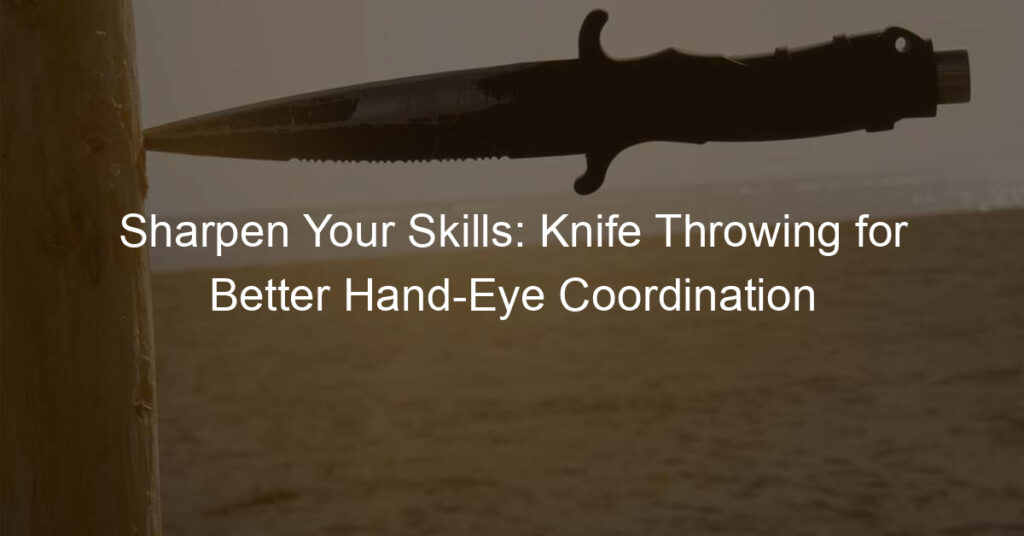Introduction to Knife Throwing Techniques
This ancient art form has been practiced for centuries and is now a popular hobby and competitive sport. Whether you’re a beginner or an experienced thrower, mastering the right techniques can make a big difference in your performance.
-
- Overview of Knife Throwing
A skill where a person throws a knife at a target, aiming to hit it accurately. It requires concentration, precision, and a lot of practice. The art of knife throwing can be traced back to prehistoric times, and it has been a part of various cultures around the world.
First, it ensures your safety and the safety of those around you. Second, it allows you to throw with accuracy and consistency. Lastly, it gives you the confidence to participate in competitions or simply enjoy the sport more. Whether you’re throwing for fun or competition, the right techniques can help you achieve your goals.
The Basics of Knife Throwing
Knife Throwing Distance
-
- How to determine the right throwing distance
The right throwing distance depends on the size and weight of the knife, as well as your comfort and skill level. As a beginner, start with a shorter distance, about 8 to 10 feet away from the target. As you gain confidence and improve your technique, you can gradually increase the distance.
-
- Impact of distance on knife throwing techniques
For shorter distances, you might need to use a half-spin throw, where the knife makes a half rotation before hitting the target. For longer distances, a full-spin or even multiple-spin throw might be required.
Beginner Knife Throwing Techniques
-
- Basic Grip Techniques
A firm but relaxed grip is essential. You should hold the knife by the handle, with your fingers wrapped around it and your thumb resting on the side. Avoid squeezing the handle too tightly as this can affect your throw. Practice holding the knife until you feel comfortable and in control.
-
- Throwing Stance and Posture
A significant role in the accuracy and power of your throw. Stand with your feet shoulder-width apart, with your non-throwing foot slightly in front. Your body should be upright, and your weight evenly distributed. As you prepare to throw, lean slightly forward, shifting your weight onto your front foot. This stance provides stability and helps you maintain balance throughout the throw.
-
- Throwing Motion and Release
Fluid movement that starts from your shoulder and ends with the release of the knife. Your arm should move in a straight line, and your wrist should remain locked to ensure the knife travels straight towards the target. The release point is crucial. Release the knife when your arm is fully extended and pointing towards the target. Practice this motion repeatedly to develop consistency and accuracy in your throws.
Advanced Knife Throwing Techniques
Focusing on the ‘No Spin Knife Throwing‘ method. This technique is a favorite among professionals and enthusiasts alike due to its precision and effectiveness.
No Spin Knife Throwing
-
- The concept of no spin throwing
A technique where the knife is thrown in such a way that it travels towards the target without rotating. This is achieved by controlling the release of the knife and the follow-through of the throw. The key is to ensure that the knife’s tip is always pointing towards the target throughout the throw. This technique is often used in close-range knife throwing due to its increased accuracy.
-
- Choose the Right Knife: A balanced knife with a sharp point is ideal for no spin throwing.
- Proper Grip: Hold the knife by the handle, with your thumb on one side and your index and middle fingers on the other.
- Throwing Stance: Stand with your dominant foot forward, body facing the target.
- Throwing Motion: Extend your arm towards the target and release the knife smoothly, ensuring the knife’s tip is always pointing towards the target.
- Practice: Consistent practice is key to mastering this technique. Start with close-range throws and gradually increase the distance as you get more comfortable.
Military Knife Throwing Techniques
-
History and Evolution of Military Knife Throwing
The art of knife throwing has its roots in prehistoric times, where early humans used sharpened stones as weapons. It was not until the advent of organized warfare that the practice of knife throwing was formalized and refined. Military forces across the globe have used knife throwing techniques for centuries, from the Roman legions to the Japanese ninja.
Over the years, these techniques have evolved, with modern militaries often incorporating knife throwing into their close combat training. Today, military knife throwing techniques are not only used in warfare but also in sport and recreational activities.
-
Key Techniques Used in Military Knife Throwing
- Overhand Throw: This is the most common technique used in military knife throwing. The thrower holds the knife by the handle and throws it overhand, similar to a baseball pitch. This technique allows for a strong and accurate throw.
- Underhand Throw: The thrower holds the knife by the blade and throws it underhand. This technique is often used when the thrower is in a crouched or kneeling position.
- Sidearm Throw: Involves throwing the knife from the side, similar to a frisbee throw. It is often used when the thrower needs to throw the knife around an obstacle.
Knife Throw Game: Making Practice Fun
- Popular Knife Throw Games
- Target Practice: This is the most common knife throw game. The goal is to hit the bull’s eye on a target board. It’s a great way to practice your aim and control.
- Knife Golf: In this game, players throw their knives at targets set at varying distances, similar to golf. The player who hits all targets with the least number of throws wins.
- Knife Darts: This game is played like traditional darts but with knives. It’s a fun way to improve your aim and precision.
- How Games Can Improve Your Throwing Techniques
- Enhanced Accuracy: Games like target practice and knife darts require you to hit specific spots on the target. This can help improve your accuracy over time.
- Better Control: Games that involve hitting targets at different distances, like knife golf, can help you gain better control over your throws.
- Increased Confidence: As you see your skills improving through these games, your confidence in your knife throwing abilities will also grow.
Professional Knife Throwing: Taking it to the Next Level
Competing in Knife Throwing
-
- The rules of competition
May vary from one competition to another, but they generally cover aspects like the type of knives to be used, the distance from the target, and the scoring system. For instance, in most competitions, the knife must stick into the target for the throw to be considered successful. Familiarizing yourself with these rules is the first step towards competing professionally. You can find a comprehensive list of rules on the Wikipedia page on Knife Throwing.
-
- Training for professional knife throwing
You need to practice regularly to improve your accuracy and consistency. It’s also important to work on your physical fitness, as strength and endurance play a key role in knife throwing. Consider working with a coach or joining a knife throwing club to get the guidance and support you need. Remember, practice makes perfect!
Competing in professional knife throwing can be a thrilling experience. It gives you the opportunity to showcase your skills, learn from others, and even make a name for yourself in the knife throwing community. So, don’t hesitate to take your passion for knife throwing to the next level. With the right understanding of the rules and effective training, you can become a formidable competitor. Good luck!
Additional Resources for Knife Throwing Techniques
Knife Throwing Techniques PDF
PDF guides can be a valuable tool for learning and improving your knife throwing skills. They offer a wealth of information and can be accessed at your convenience.
-
- Benefits of using PDF guides for learning
They are portable, meaning you can take them with you wherever you go. They are also easy to use, with clear instructions and diagrams that make learning straightforward. Plus, you can easily bookmark pages or highlight sections for quick reference. According to a Wikipedia article, PDFs are designed to encapsulate the information necessary to display a document in the same manner and on different hardware and software platforms.
-
- Top recommended knife throwing techniques PDFs
Some of the top recommended ones include “The Complete Guide to Knife Throwing” and “Mastering the Art of Knife Throwing”. These guides offer step-by-step instructions, tips, and tricks to help you improve your skills.
Knife Throwing Guide
- What to Look for in a Good Knife Throwing Guide
-
- Comprehensive Content: Should cover all the basics of knife throwing, including grip, stance, distance, and safety precautions. It should also delve into advanced techniques as you progress.
- Clear Instructions: Be easy to follow, ideally written at a grade 5-6 reading level.
- Visual Aids: A good guide will include diagrams or photos to help visualize the techniques being taught.
- Progressive Learning: Offer a step-by-step progression to help you build your skills gradually and safely.
- Reputable Author: Written by a professional or experienced knife thrower. You can usually find this information in the author’s bio or on Wikipedia.
-
- Recommended Guides for Different Skill Levels
-
- Beginners: “The Art of Knife Throwing for Beginners” is a great starting point. It breaks down the basics in a simple, easy-to-understand manner.
- Intermediate: “Mastering Knife Throwing: A Guide for Intermediate Throwers” offers a deeper dive into techniques and provides exercises to improve accuracy and consistency.
- Advanced: “The Professional’s Guide to Knife Throwing” is ideal for those looking to take their skills to the next level. It covers advanced techniques and competitive strategies.
Conclusion: Mastering the Art of Knife Throwing
-
- Recap of key knife throwing techniques
We started with the basics, learning about the different types of knives and the importance of choosing the right one for you. We then moved on to the techniques, understanding the grip, stance, and throw. The advanced techniques section took us further, introducing us to the concept of rotation and how to control it. We also discussed how to make practice fun with knife throwing games, and finally, we explored the world of professional knife throwing.
-
- Next steps in your knife throwing journey
Try to practice a little bit every day. You might also consider joining a local knife throwing club or participating in competitions. This can provide you with a supportive community and a platform to test your skills. Don’t forget to keep exploring additional resources, like books and online tutorials, to further enhance your knowledge and skills.







